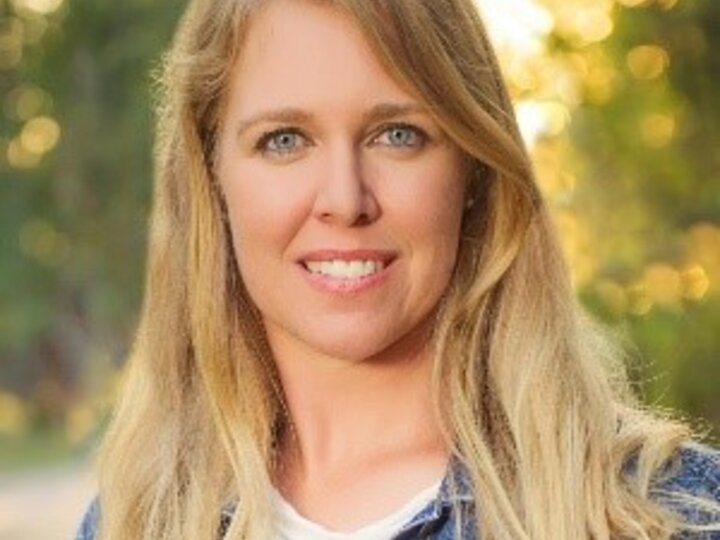
Nebraska Extension Educator - Holt & Boyd Counties - LaDonna Werth
Nebraska Extension Educator - Holt & Boyd Counties - Amy Timmerman
Nebraska Extension Educator - Holt, Boyd, Garfield, Loup, & Wheeler Counties - Bethany Johnston
Nebraska Extension Educator - Brown, Rock, & Keya Paha Counties - Brittany Spieker
Nebraska 4-H Assistant - Holt & Boyd Counties - Debra Walnofer
Oct. 13-30: Knowing, Growing, and Grazing Grass Webinar Series, Monday and Thursday evenings, 7:30pm–8:45pm CT, go.unl.edu/knowing_grass
October 26: Holt County Achievement Ceremony, 5:00pm, Faith Wesleyan Center, Atkinson, NE
October 29: Cedar Workshop, 1:00pm-4:00pm, E-Free Church, Ainsworth, NE. To register: BKR Extension Office at 402-387-2213 or email Mary Jo at Mmccall2@unl.edu.
November 2: Boyd County 4-H Jamboree, 2:00pm, T&S Farmstore and Food Coop, Bristow
November 19: Cedar Workshop, 1:00pm-4:00pm, Fire Hall, Ericson, NE. To register: Holt County Extension Office at 402-336-2760 or email Bethany at bjohnston3@unl.edu.
December 10: Cedar Workshop, 1:00pm-4:00pm, Location TBA, Boyd County. To register: Holt County Extension Office at 402-336-2760 or email Bethany at bjohnston3@unl.edu.
Walnuts provide many health benefits
October is the season for harvesting walnuts. Not only are walnuts tasty, but they are also very nutritious.
Walnuts contain more alpha-linolenic acid (ALA), a plant-based omega-3 essential fatty acid necessary for a healthy human body, than any other nut and are one of the best plant food sources of omega-3s. Walnuts are also high in healthy polyunsaturated fat, have been shown to reduce total and LDL (bad) cholesterol, and protect the heart overall.
Walnuts provide several antioxidants, including vitamin E. In fact, in a study testing the antioxidant content of 1,113 different foods, walnuts were ranked second only to blackberries for the highest content. Antioxidants boost the immune system and help prevent the production of free radicals, which in turn helps protect against the development of chronic diseases associated with aging.
Walnuts are a good source of protein and fiber. Dietary fiber contributes to a healthy gastrointestinal tract and makes you feel full, which helps with weight management. Walnuts also contain magnesium and phosphorus, which are important for reaching optimal health. Research has shown that walnuts improve cognitive and motor function as well.
Researchers have found that consuming 1.5 ounces, or about twenty halves, of walnuts every day is helpful. This amounts to about 278 calories, so remember to substitute them for something else in your diet instead of adding them to your typical daily intake in order to prevent weight gain.
LaDonna Werth
Extension Educator
Phone: 402-336-2760
E-mail: lwerth2@unl.edu

Purchase whole walnuts that are heavy for their size. Walnuts spoil easily because of their high fat content so shelled walnuts should be stored in an airtight container in the refrigerator for up to six months or in the freezer for up to one year. Unshelled nuts should be kept in the refrigerator or in a cool, dark, dry environment for up to six months.
Source: Christeena Haynes, MS, RD, LD, former Nutrition and Health Education Specialist, Dallas County, University of Missouri Extension
Pasture, Rangeland, Forage Insurance as a Risk Management Tool
At a Glance
PRF Insurance is based on a rainfall index, not actual forage production.
- Indemnities help cover extra feed costs or supplement purchases during drought.
- Producers choose coverage levels (70–90%) and critical two-month intervals.
- Enrollment deadline for 2026 coverage is December 1.
Pasture and forage are the backbone of many Nebraska livestock operations, but they are also among the most vulnerable resources. Drought can quickly reduce forage production, leaving ranchers with tough choices of either buying expensive feed or cutting herd numbers.
One tool available to manage this risk is the USDA’s Pasture, Rangeland, and Forage (PRF) Insurance. Unlike traditional crop insurance, PRF does not ensure the actual forage grown on your operation. Instead, it is based on a rainfall index for your area. If rainfall falls below the long-term average during the months you select, you may receive an indemnity payment.
Amy Timmerman
Extension Educator
Phone: 402-336-2760
E-mail: atimmerman2@unl.edu

These indemnities are designed to help offset the extra costs of purchasing hay, feed, or other supplements when pasture growth is limited. In turn, PRF can help stabilize cash flow in dry years, providing ranchers with the flexibility to maintain their herds and avoid short-term decisions that could have long-term consequences.
Producers can customize coverage by selecting a productivity factor and a coverage level between 70% and 90% of the average rainfall, as well as specific two-month intervals when precipitation is most critical for their operation.
Enrollment occurs annually before December 1, with coverage based on your county and the grazing or haying months you select. While PRF does not guarantee a profit, it is a valuable tool to include in your risk management plan, especially as weather patterns remain unpredictable.
For livestock producers who rely on grazing and hay, PRF can provide peace of mind and financial protection against the uncertainties of rainfall. To learn more, visit cap.unl.edu/forage, or contact your local crop insurance agent.
Source: Shannon Sand – Extension Educator, Agricultural Economist (CropWatch - September 24, 2025)
Purchasing Bred Females
Weaning time is here and with that the decision to retain or sell heifer calves is front and center. The cattle cycle continues to be strong for both steers and heifers compared to years past, and herd rebuilding is slow or yet to start in some regions. Record low cow inventory has increased the value of all cattle and this should continue until the rebuild occurs or consumer demand decreases. Therefore, the opportunity cost of retaining heifers is something to strongly consider before loading the truck. Regardless of selling or retaining heifers, there is opportunity to purchase bred females and increase the calves available to market next season in this strong market. Here are some ideas to think about when purchasing bred females.
First, consider what perks bred cows can bring to your herd and pay accordingly. Ask yourself these questions when determining what to pay for bred cows.
- Will the new females add value to the herd by improving genetics?
- Will females calve in a narrow window and complement your current calving season?
- Will these cows improve the current calving distribution?
- Does grass return on investment improve when it is being grazed by cow/calf pairs versus replacement heifers?
Bethany Johnston
Extension Educator
Phone: 402-336-2760
E-mail: bjohnston3@unl.edu

Operational Considerations
Purchasing bred females may allow one to maximize ranch productivity through new genetic programs. For example, buy crossbred females and enter them into a terminal breeding program. This set of females would maximize heterosis and provide a source of high valued calves for sale each year. This increase in returns could fund the purchase of maternally focused replacement heifers or bred females as needed to maintain or expand the cowherd. The replacement rate in the crossbred cows should also be beneficial to herd maintenance as increasing heterosis will improve reproductive efficiency and herd longevity.
If short term investments are desired, cheap feed costs provide opportunity to custom calving bred females or purchase bred females that will be offered for sale as pairs. Both options can be tailored to fit into an underutilized calving window and provide a fast return on investment if feed inventory and time exist. Check calving dates closely and make sure adequate facilities and labor are available on the operation before purchasing. Follow a complete herd health plan and monitor calf health closely to have pairs ready to be moved around a month of age.
Purchase early bred cows to increase the number of females calving early in the season and improve the herd calving distribution. According to the NDSU CHAPS program, on average 60% of cows should calve in the first 21 days of the calving season. Increasing the number of cows that calve early in the season will increase the uniformity and weight of the calf crop come weaning, driving higher values when marketed. Calving earlier will also allow cows more time to return to estrus before breeding begins and improve early conception rates the next breeding season.
Lastly, pasture purchase and rental values are increasing nationwide. Therefore, maximizing pounds produced per acre can be improved by grazing cow/calf pairs on grass that would otherwise be reserved for replacement heifers that will not wean a calf for 18 months. Replacement heifers can be developed and bred in a drylot efficiently, providing another outlet to add value to cash crops through cattle. And at this point in the cattle cycle, strong demand for beef and cheap feed, will continue to pay cow/calf producers back for raising more calves, until signals turn and heifer retention begins.
Overall, it is a good time in the cattle cycle and new cow/calf opportunities are possible if plans are prepared properly.
Source: Taylor Grussing - SDSU Extension Cow/Calf Field Specialist (SDSU Beef – September 11, 2025)
Global Handwashing Day: A Simple Step for a Healthier Community
Every year on October 15, Global Handwashing Day serves as an important reminder of how something as simple as washing our hands can make a big difference in keeping ourselves, our families, and our communities healthy.
Research has shown that simply washing your hands can prevent about one in three stomach-related illnesses and one in five respiratory infections, like colds or the flu. Whether you live on a ranch, work in town, or have kids in school, taking a few extra moments at the sink can go a long way toward preventing sickness.
When to Wash Your Hands
Handwashing is especially important during key times, including but not limited to:
- Before eating or preparing food
- After handling raw meats
- After using the restroom or changing diapers
- After blowing your nose, coughing, or sneezing
- After handling animals or animal waste
- After touching garbage or outdoor surfaces
Brittany Spieker
Brittany Spieker, Extension Educator
Phone: 402-387-2213
E-mail: bspieker2@unl.edu

Even if your hands do not look or feel physically dirty, germs can still be present - so it is important to wash them regularly. This list is not exhaustive, but it is a good place to start building healthy habits.
How to Wash Your Hands the Right Way
According to the Centers for Disease Control and Prevention (CDC), proper handwashing includes these five steps.
- Wet your hands with clean, running water and apply soap.
- Lather all parts of your hands - including the backs, between your fingers, in your palms, and under your nails.
- Scrub for at least 20 seconds (try humming “Happy Birthday” twice).
- Rinse well under running water.
- Dry your hands with a clean towel or let them air dry.
In our north central Nebraska communities, where we take pride in hard work and looking out for one another, something as simple as clean hands can make a meaningful difference. This Global Handwashing Day, take a moment to reinforce good habits at home and at work - it is one of the easiest ways to stay healthy year-round.
Source: Brittany Spieker, MS, RDN - Food, Nutrition, and Health Extension Educator, Nebraska Extension